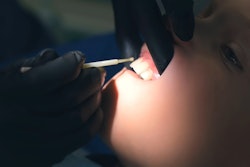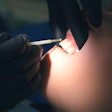Applying sealants to primary molars may reduce and delay pit and fissure caries (PFC) but not smooth surface caries (SSC), according to a study published recently in the Journal of the American Dental Association.
Over a five-year period, the use of sealants was linked to fewer cases of PFC, both in clinic and operating (OR) room settings, the authors wrote.
“Our findings affirmed the role of sealants in PFC prevention in primary teeth and their association with less invasive future restorative needs,” wrote the authors, led by Dr. Jennifer Archibald of Boston Children’s Hospital (JADA, October 18, 2025).
This five-year retrospective study tracked 383 children under 6 years old who were at high risk of developing caries, beginning in September 2013. It compared primary molars with and without sealants in both hospital clinic and OR settings. Children treated in the OR typically had multiple areas of decay, were very young, or were unable to cooperate during outpatient care, placing them at greater risk for caries, they wrote.
Eligible patients had at least two follow-up visits with radiographs taken from their baseline appointment. Participants were divided into four groups: no sealant or sealant in either the clinic or OR. They were monitored for PFC, SSC, and the time between baseline and caries onset was recorded.
Sealed molars had a significantly lower risk of developing PFC, with adjusted hazard ratios (aHR) of 0.19 overall, 0.35 in the clinic, and 0.05 in the operating room (all p < 0.001). Sealants did not significantly reduce the risk of SSC in any setting, they wrote.
The average time to PFC onset was longer in sealed molars, 4.76 years overall, 4.65 years in the clinic, and 4.75 years in the OR, compared to 4.02, 4.15, and 3.55 years, respectively, for unsealed molars. Unsealed molars that developed caries required more invasive treatments, such as stainless-steel crowns and extractions. After five years, 86% of sealed molars remained PFC-free compared to 68% of unsealed molars.
However, the study had limitations. The study was retrospective, and examiners were not blinded to which teeth had sealants, so their assessments may have been biased, the authors added.
“The association of primary molar sealants with the reduction of caries in children should be explored further in future studies, including randomized controlled trials,” they wrote.




















